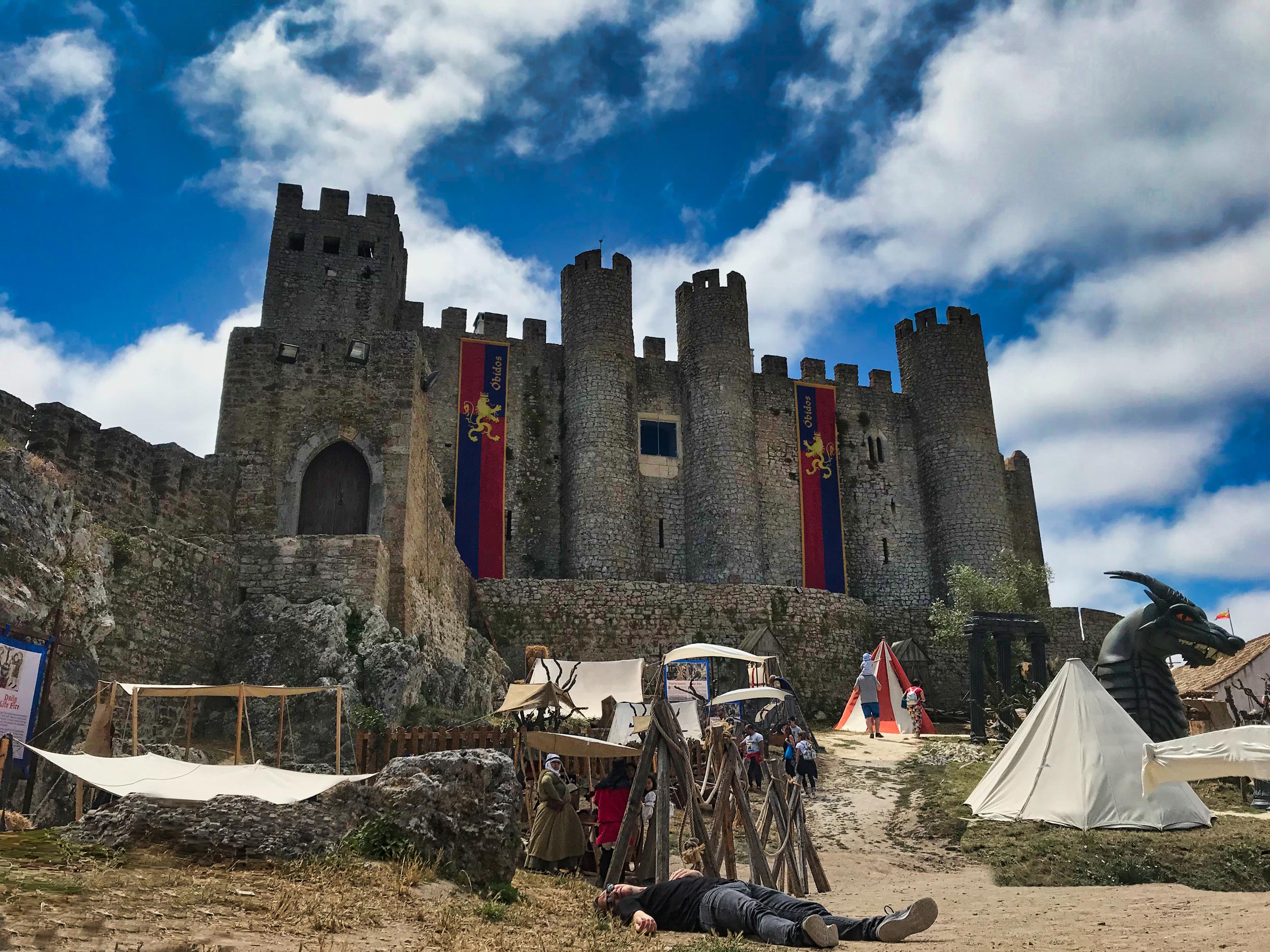Óbidos
Óbidos is a Portuguese town in Oeste region. The town has approximately 3100 inhabitants.
The area of the town of Óbidos is located on a hilltop, encircled by a fortified wall. Óbidos remains a well-preserved example of medieval architecture; its streets, squares, walls and its castle are a popular tourist destination. The castle now houses a pousada.
The municipality had its growth from a Roman settlement near the foothills of an elevated escarpment. A settlement was constructed by early Celt tribes, that was later a centre of trade for the Phoenicians. Archeological evidence from the base of the medieval tower (south of Facho) at Óbidos Castle indicates Roman construction linked to an outpost of the Roman civitas of Eburobrittium.
After the fall of Rome, the region came under the influence of the Visigoths Sometime after 713 the Moors established a fortification on this mountain, while a Christian community of Mozarabs lived in the Moncharro neighbourhood.
The area was taken from the Moors by the first King of Portugal, Afonso Henriques, in 1148. Tradition states that one knight, Gonçalo Mendes da Maia, was responsible for the successful storming of the Moorish castle. The retaking of Óbidos was a final stage in the conquest of the Estremadura Province region, after the settlements of Santarém, Lisbon and Torres Vedras. Following the control of the region, the settlement received its first foral (charter) in 1195, during the reign of King Sancho I. In 1210, King Afonso II gave the title of this village to Queen Urraca. Since then, Óbidos has often been patronized by the Queens of Portugal, giving rise to its informal title as Vila das Rainhas; several royal consorts enriched the village with donations from the Middle Ages until the 16th century.
Date: July 2019
Photographer: Merche Mateo
Additional information: wikipedia







